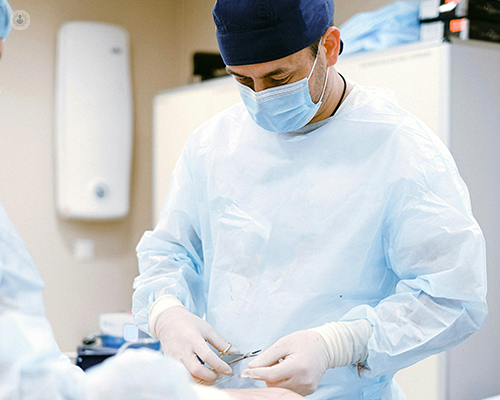The circumcision debate: weighing the pros, cons, and latest insights
Escrito por:Circumcision is a surgical procedure that involves the removal of the foreskin, the layer of skin that covers the head of the penis. The procedure can be performed for medical, religious, cultural, or personal reasons. Although often performed in infancy, it can also be carried out in adults.

is key to receiving personalised advice
What are the medical benefits of circumcision?
From a medical standpoint, circumcision can offer several benefits, though these may vary depending on the population and region. Potential benefits include:
- Reduced risk of urinary tract infections (UTIs): circumcised males tend to have a lower incidence of UTIs, especially during infancy.
- Lower risk of sexually transmitted infections (STIs): some studies suggest that circumcision reduces the risk of contracting certain STIs, including HIV.
- Prevention of foreskin-related problems: circumcision can prevent conditions such as phimosis, where the foreskin cannot be fully retracted, and balanitis, an inflammation of the glans.
- Reduced risk of penile cancer: although rare, circumcision may lower the risk of developing penile cancer.
What are the risks and downsides of circumcision?
As with any surgical procedure, circumcision carries some risks, although serious complications are rare when performed by an experienced professional. Some of the risks include:
- Pain: though anaesthesia is used, there can be significant post-operative pain, particularly in adults.
- Infection: as with any surgery, there is a small risk of infection at the surgical site.
- Wound complications: these might include bleeding, abnormal scarring, or excessive sensitivity in the affected area.
- Impact on sensitivity: some patients report a reduction in penile sensitivity after circumcision, although this does not occur in all cases.
Is circumcision medically necessary?
In many cases, circumcision is not strictly necessary from a medical standpoint. There are alternative ways to manage conditions like phimosis or foreskin infections, including the use of steroid creams or less invasive treatments. However, in severe or recurrent cases, circumcision may be recommended as the best option.
What is the current stance of healthcare professionals in the UK?
In the UK, the approach to circumcision tends to be conservative. Recommendations vary depending on the patient’s medical condition. While circumcision is routine in some countries, in the UK, it is usually reserved for specific cases where there is a clear medical justification.
What alternatives are there to circumcision?
Depending on the reason for considering circumcision, there may be less invasive alternatives. For example:
- Phimosis: treatment with steroid creams can often resolve the condition without surgery.
- Urinary tract infections: these can be treated with antibiotics and good hygiene practices, without resorting to circumcision.
- STIs: using condoms and proper sexual education are highly effective methods for reducing STI risk without the need for surgery.
Is the procedure painful?
For adult patients, circumcision is performed under local or general anaesthesia, which minimises pain during the procedure. However, some discomfort can occur during the recovery period, which can be managed with pain relief medications.


